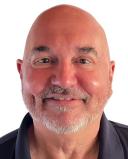Resilience
Hope Is a Choice to Make Things Better
Personal Perspective: Being hopeful means choosing to act for better days ahead.
Posted March 1, 2024 Reviewed by Monica Vilhauer
Key points
- Hope is a cornerstone of resilience.
- Hope is associated with positive outcomes, such as posttraumatic growth and well-being.
- Hope is more powerful than optimism because it involves personal agency and a sense of power and motivation.
“Better days are coming, John.” My late mom offered these words of comfort, encouragement, and support when she knew I was having a difficult time and needed a shot of hope to get me through it.
As in so many areas of life, Mom knew what she was doing. Chances are she had to say those same words to herself considering the many difficult times she faced in her 84 years, beginning in childhood circumstances most would consider deprived: no electricity, running water, or indoor bathroom in the house where she grew up in eastern Connecticut.
Turns out that hope—whether for a better day or the end of a global health crisis—is a cornerstone of emotional resilience.

In a 2023 commentary in Current Opinions in Psychology (“Hope’s relationship with resilience and mental health during the COVID-19 pandemic”), University of Houston graduate psychology student Amy R. Senger concludes that “hope is a protective resilience factor that promotes holistic wellness across culture, physical health status, or occupation while individuals are experiencing stress and effects on their mental health from the pandemic.” She notes that “hope has also been associated with positive outcomes such as post-traumatic growth and well-being.”
After I had a life-changing phone call from my doctor in 2005 telling me I had tested HIV-positive, my first reaction was shock. Then denial (maybe they mixed up my result with someone else’s). Tears. Fear (terror, to be precise). Finally, hope kicked in—the same hope that had carried me across so many hard times and painful losses to that fateful moment.
Looking back I see that it was my hopefulness that sustained me through so many difficult experiences. I felt a strong sense that I would somehow find a way to pay for the expensive medications I had to start taking right away, even though I panicked at first because my individual insurance policy capped prescription coverage at $1500 a year. My new meds cost multiple times that amount per month—the pills that would mean the difference between living with HIV rather than succumbing to one or another of the deadly effects of untreated HIV.
Where did my hope come from? It had a lot to do with a belief that I could take steps—reaching out to people, looking for resources—to ensure that I would be able to get the lifesaving medicine I needed. What this meant in practice was this: Calling and emailing people I knew from my many years of reporting on HIV-AIDS as a health journalist, asking for suggestions of what to do, and whom else to contact. The outcome was my enrollment for 96 weeks in a clinical trial that provided the same medication my doctor had prescribed, free. In exchange I had to come for regular lab work and examination.
By the end of those 96 weeks, I had moved from Washington, DC to my home state of Connecticut. I connected with the local HIV service organization and got plugged into the federal government’s Ryan White program that helps people who can’t afford their medications on their own. In all the years since, I have been able to receive all the medications and medical care I have needed—in no small part due to my own self-advocacy.
In their recent book Build the Life You Want: The Art and Science of Getting Happier, co-authors Oprah Winfrey and Harvard Business School professor Arthur C. Brooks, make clear the difference between simply being optimistic versus having hope. Optimism, they say, boils down to the belief that “things will turn out all right.” Hope, on the other hand, is the “conviction that one can act to make things better in some way.”
Hope is much more powerful than optimism, Winfrey and Brooks point out, because hope involves personal agency and it gives a sense of power and motivation. Hope is an active choice. We choose to be hopeful, just as we choose to give up hope.
I felt hopeful I would be able to get the medication I needed because I took action. I didn't simply despair or blame "the system." I was very motivated to survive and stay healthy. That is precisely what I did and have done for the 18-plus years since.
The good news, as Brooks and Winfrey make clear, is that hope can be learned and practiced by following these three steps:
- Imagine a better future and detail what makes it better.
- Envision yourself taking action to change the situation that is troubling you.
- Take action and execute your vision of improvement.
The philosopher Arthur Schopenhauer called hope a “folly of the heart” because he believed it confused our understanding of what is and what we would prefer it to be. Yet even Schopenhauer acknowledged that abandoning hope leads to despair because it involves both giving up hope and fear.
Hope is so important to resilience because it serves as a foundation for the psychological fortress you need in times of turmoil. Hope provides solace and inspires you to channel your inner strength and confront adversity with determination.
“Better days are coming.” That is hope. But it only works if you act in ways that will help bring those better days about.




